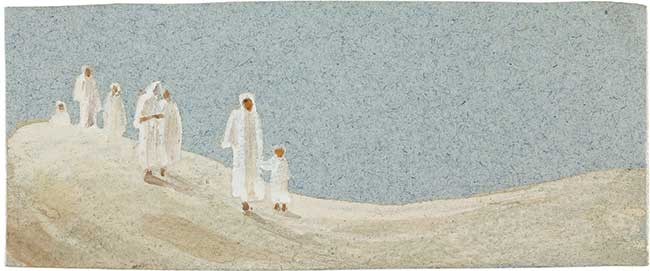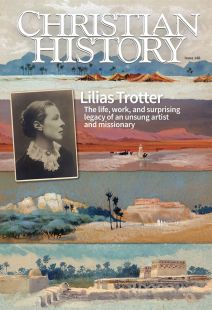Lilias Trotter: art, culture, mission

[Lilias Trotter, El qued Watercolor, 1895—Used by permission of Lilias Trotter Legacy and Arab World Ministries of Pioneers]
Use these questions on your own or in a group to reflect on the experiences and impact of Lilias Trotter.
1. Had you ever heard of Lilias Trotter before reading this issue? If so, what was your impression of her life story? If not, what impression did you gain of her story from this issue? Where in it can you make connections with your own story?
2. If you had to come up with one word to describe and unify all the different aspects of Trotter’s life as described in our lead article (pp. 6–10) and interview (pp. 40–41), what would that word be?
3. What lessons from nature did Trotter draw for the spiritual life in the excerpt from Parables of the Cross (p. 11)? Think of one or two applications of her points in your own life (and share with others if you feel led).
4. How did authors and artists like John Ruskin and George MacDonald connect truth, beauty, faith, and art (pp. 12–16)? How would you?
5. How did MacDonald and Trotter experience God’s creation as an aid to prayer (p. 17)? How has experiencing creation affected your prayer life?
6. Our article on Victorian piety and service organizations (pp. 18–20) mentions uniting themes behind all these organizations. Do you agree? Do you see other common threads?
7. Trotter used an extended metaphor in the excerpt from Parables of the Christ-life (p. 21). What is it, and what is the spiritual application she made? Again, think of one or two applications of her points in your own life (and share with others if you feel led).
8. How did Trotter collaborate with other missionaries (pp. 24–28)? How have you collaborated with other Christians to do ministry?”
9. How were Trotter and Amy Carmichael similar (p. 29)? How were they different? How would you describe and compare the impact of each of them?
10. In what ways did Trotter’s attempts to evangelize Muslims echo other attempts (pp. 30–33)? In what ways were they different? How do you think she evaluated her efforts? How would you?
11. How did Trotter define union with God in her outreach to the Sufi brotherhoods (p. 34)? How does it resemble other definitions you have encountered?
12. If you could ask one question of someone in our gallery (pp. 35–38), what would your question be and who would you ask?
13. How might your understanding of “Turn Your Eyes Upon Jesus” change after reading the entire metaphor that inspired it (p. 39)?
By the editors
[Christian History originally published this article in Christian History Issue #148 in 2023]
Next articles
Did you know? Medieval Renewal
Can we use the word “revival” about medieval movements for renewal?
the editorsEditor's note: Medieval revivals
Looking at the big picture of renewal in church history
Jennifer Woodruff TaitSupport us
Christian History Institute (CHI) is a non-profit Pennsylvania corporation founded in 1982. Your donations support the continuation of this ministry
Donate






